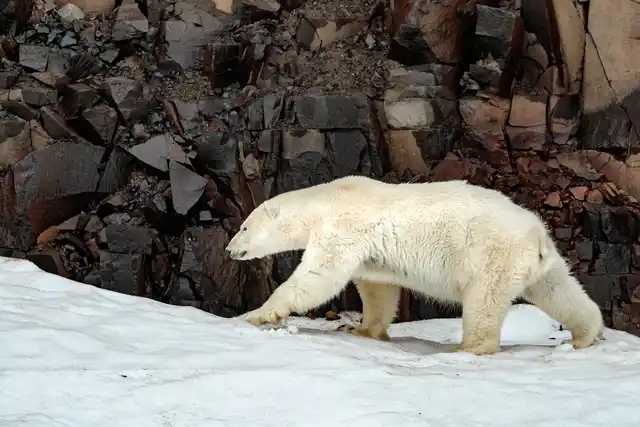When is The Best Time to See Polar Bears in Svalbard?
Latest figures on the number of polar bears suggest that the Svalbard Archipelago is home to around 3,000 bears. It is tricky to say when specifically it is the best time to see polar bears in Svalbard. Early in the season, during the month of May, conditions can be perfect as the ice has not yet melted and the snowy white backdrops can make for a photographer's dream. Later in the season, July and August, the pack ice begins to melt meaning you can push further north, cover more ground, and the polar bears are often more concentrated in the remaining icy areas on the hunt for seals and to stock up for the winter…
In particular and to offer you a truly up close and intimate experience, we run small ship Polar Explorer expeditions throughout the season from April to August on the R/V Kinfish, an intimate passenger ship that is ideal for exploring Svalbard's fjords, coves, and glaciers. Its size allows easy navigation through rugged landscapes, tight spaces, and shallower waters to explore wilder and more secluded areas - often allowing us to discover some of the favourite hideouts of the polar bears themselves.
When is The Best Time to See Polar Bears in Arctic Canada
Many people refer to Churchill as “The Polar Bear Capital of the World” such is the abundance of bears in the area. Once a year, for a limited time only the bears gather on the tundra, waiting for the "Big Freeze" so they can start the winter seal hunting season out on the pan ice. It is not uncommon to see, at this time, mothers with their cubs and large male bears sparring to pass the time. Between October and November is the best time to see polar bears in Churchill. For a completely different experience you can go during the 24 hour daylight summer months, May and July, when the best place to see polar bears is on a floe edge safari on or around Baffin Island. You may spot polar bears hunting on the ice and this is also a great time to spot narwhals, the unicorns of the sea.
The Nanuk Polar Bear Lodge offers the best polar bear sightings in Arctic Canada's untouched wilderness and the Newborn Polar Bear Cubs Lodge, 40 miles south of Churchill, Manitoba, provides a full-service non-consumptive wilderness experience for observing newborn cubs.









